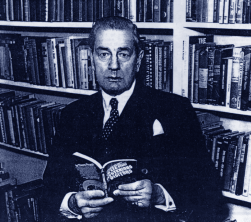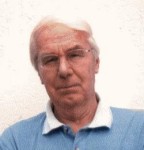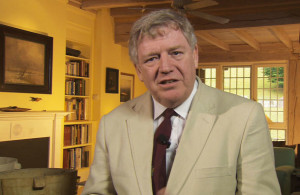Celts
Grenier, Albert
Albert Grenier (1873-1961) was a French historian and archaeologist, who made a special study of the Romans and Celts, particularly the Gauls. In addition, Professor Grenier had a great interest in the Atlantis story and accepted its historicity(a). Apparently, he was a supporter of diffusionism a la Ignatius Donnelly. In this regard, he is quoted in Marcel Homet‘s Sons of the Sun [813], where Homet discusses the archaeological remains found in Colombia’s Tierradendro and claims [p.156] that “it may perhaps be that the people of San Augustin and Tierra Dendro and the faraway Etruscans are descendants of the same aboriginal tribe: the Atlanteans.” Atlantisforschung attributes the above quote to Grenier but as I read it, it was Homet who wrote it!
the Gauls. In addition, Professor Grenier had a great interest in the Atlantis story and accepted its historicity(a). Apparently, he was a supporter of diffusionism a la Ignatius Donnelly. In this regard, he is quoted in Marcel Homet‘s Sons of the Sun [813], where Homet discusses the archaeological remains found in Colombia’s Tierradendro and claims [p.156] that “it may perhaps be that the people of San Augustin and Tierra Dendro and the faraway Etruscans are descendants of the same aboriginal tribe: the Atlanteans.” Atlantisforschung attributes the above quote to Grenier but as I read it, it was Homet who wrote it!
Woods, Anthony
Anthony Woods is the author of Atlantis Ireland, published under the auspices of the unaccredited Keystone University(a) in Dublin, with Woods listed as CEO(b). To be blunt, for me as an Irishman, in spite of such an interesting title, I was greatly disappointed. In fact, I was by turn uncertain whether I should laugh or cry.
Woods engages in a generous level of speculation, which was certainly attention seeking. He selectively uses some mythological stories as if history whenever it suits his purpose [p.71]. The content is irritatingly repetitious throughout, references should have been numbered, which along with a few typos, all cry out for an editor.
His core contention is that Stone Age Ireland was a cultural hyperdiffusionist centre. He claims that megalith building, language and religion, all spread globally from Ireland, also known as Atlantis!
Among his many outlandish claims are that:
1.The ancient Irish language is the oldest in the world and is the most extensive with almost a million words [p.142], which is completely wrong by about a factor of six!
2.Irish megaliths are the most spectacular – obviously Woods has never heard of Brittany!
3.Megalith construction spread from Ireland to the world. However respected archaeologists such Aubrey Burl, Mike Parker Pearson and Robert Hensey [1766.6] burst that particular bubble with the their shared view that megalith building originated in France.
According to Woods, “the high concentration of megaliths on the west cost of Britain and France proves that Ireland was the fountainhead, the source of the megalithic mother culture.” The ‘logic’ here eludes me!
4.For some reason Woods thinks islands are ideal for evolution(p139), and that Cro-Magnon Man evolved in Ireland[p.103]!
5.Although Ireland was the island of Atlantis, the city of Atlantis (Cerne) was in Mauritania and is known today as the Richat Structure!
6.The Celts didn’t come to Ireland, they came from Ireland![p.99]
7.Woods makes the modest claim that the Irish visited America thousands of years before Columbus. Which may or may not be true, but what has that to do with Atlantis? [p.93]
In all, this book is not just an Hibernocentric rant. Woods also offers a lengthy diatribe against British imperialism and Vatican political interference, which, although probably justifiable, has also nothing to do with Atlantis
He introduces a range of subjects such as giants, Machu Picchu, Gobekli Tepe and the Garden of Eden, all with Woods’ imagined connection with ancient Ireland!
Apart all the nonsense about ancient Ireland, he barely touches on Plato’s dialogues, except to rubbish his narrative with “It’s clear that Plato’s legend is useful but unreliable, that it combined two separate related places, a lot of exaggeration and several historical errors.”[p.13] and twice patronisingly refers to Plato’s account as “useful but unreliable.”[p.50]
Woods did quote from Ulf Erlingsson, who made a more valliant attempt to link Ireland with Atlantis some years. Erlingsson matched the dimensions of 2000 x 3000 stadia (340 x 227 miles) given by Plato with the diagonal dimensions of Ireland [319.16]. Unfortunately, Erlingsson got it very wrong and Woods copied his error. Plato’s figures were the dimensions of the Plain of Atlantis, while the Central Plain of Ireland is just a fraction of its size(c), being very roughly 150 x 100 miles in extent. Now, who’s unreliable?
At which point, I could take no more and gave up.
Murias
Murias according to Egerton Sykes was an Atlantean city situated near Bimini, which was destroyed when sea levels rose around 10,000 BC(a).
There is an Irish tradition that names Murias as one of the four cities of the Tuatha dé Danaan(b), who came to Ireland a thousand years before the Celts.
The pre-Hellenic Greeks were known as the Danai and were, according to an Egyptian source, the descendants of Danaus. Furthermore, the Danai have been linked with the legendary Tuatha dé Danaan of Ireland as well as the Shardana of Sardinia, who are thought to be part of the Sea Peoples.
A popular belief is that the Tuatha dé Danaan were descendants of the Hebrew tribe of Dan. Walter Baucum(c) and in particular Yair Davidiy(d) have written extensively on the people of Dan and their possible migration routes.
(a) Atlantis, A New Concept. Pt.1, Atlantis May-June, 1974
(b) https://en.wikipedia.org/wiki/Four_Treasures_of_the_Tuatha_D%C3%A9_Danann
Hirmenech, Hans-Pény (L)
Hans-Pény Hirmenech was the author of a 1906 book[1221], in French, in which he reviewed possible connections between the Celts, Basques and Atlantis. He claimed that Atlantis had been situated in the North Sea and that Helgoland was a remnant of it.
Hirmenech expressed the wild idea that the rows of standing stones at Carnac marked the tombs of Atlantean soldiers who fought in the Trojan War!
Hirmenech was a founding member of la Société Préhistorique Française (The Prehistoric Society of France)(a).
(a) https://www.prehistoire.org/
[I’m indebted to Stelios Pavlou for some details above.]
Le Poer Trench, Brinsley
Brinsley Le Poer Trench (1911-1995) was a member of both British and Dutch nobility with the titles of 8th Earl of Clancarty and 7th Marquess of Heusden and had a seat in the British House of Lords. He held a number of  extreme opinions regarding extraterrestrial visitors, UFO’s and the Hollow Earth Theory and wrote a number of books in support of them.
extreme opinions regarding extraterrestrial visitors, UFO’s and the Hollow Earth Theory and wrote a number of books in support of them.
With regard to Atlantis he placed it in the Atlantic with the Azores as its remnants[0769] and claims that those who survived its destruction became what we know as Basques, Berbers and the Celts of Britain and Ireland. He goes further and links Atlantis with Egypt together with its Sphinx and pyramids. Not content with that, he also ventures to associate the Glastonbury Zodiac with Atlantis calling it the Temple of the Stars, the title of one of his books[0770].
While his location theory is fairly standard fare he obviously forgot what he had written,
when eight years later he produced Finding Lost Atlantis Inside the Hollow Earth[778]!!
Zillmer, Hans-Joachim
Hans-Joachim Zillmer (1950- ) is by profession a qualified civil engineer but  is better known for his highly controversial theories in the fields of earth sciences and prehistory, in particular a vehement opposition to the theory of evolution. Zillmer believes that at the time of the Celts, Europe was connected with America via a landbridge which included Greenland and Iceland and he supports a Central Atlantic location for Atlantis.
is better known for his highly controversial theories in the fields of earth sciences and prehistory, in particular a vehement opposition to the theory of evolution. Zillmer believes that at the time of the Celts, Europe was connected with America via a landbridge which included Greenland and Iceland and he supports a Central Atlantic location for Atlantis.
>Atlantisforschung has published an excerpt from Zillmer’s 1998 book Darwins Irrtum (Darwin’s Error) that expands his identification of the Azores as the location of Atlantis!(b)<
His website(a) gives a fuller outline of his catastrophist theories.
O’Cleary, Helen
 Helen O’Cleary (1910-2006) was an Irish writer(a) who, in her book, Atlantis[494], part of the Pegasus series of books for younger readers, expressed the opinion that the early inhabitants of Ireland may have been refugees, rather than colonisers from Atlantis. She sees the gods of Egypt as having more in common with the Celts than with the pantheons of ancient Greece and Rome.
Helen O’Cleary (1910-2006) was an Irish writer(a) who, in her book, Atlantis[494], part of the Pegasus series of books for younger readers, expressed the opinion that the early inhabitants of Ireland may have been refugees, rather than colonisers from Atlantis. She sees the gods of Egypt as having more in common with the Celts than with the pantheons of ancient Greece and Rome.
O’Cleary’s book is just an overview of Atlantis theories and although the author seemed to be sympathetic to the idea of its existence, she failed to express an opinion regarding its exact location.
She also had an interest in astroarchaeology, which led her to an extensive study of an Irish stone circle known as ‘Pipers Stones’ at Athgreany, near Hollywood, Co. Wicklow. She demonstrated that it was a pre-Celtic calendar, details of which she published in Athgreany Stone Circle[1205].
(a) https://source.southdublinlibraries.ie/bitstream/10599/4971/2/HelenOCleryBiography.pdf
Herm, Gerhard (L)
Gerhard Herm was born in Germany in 1931 and studied in Munich and the  United States, after which he took up journalism and filmmaking. He produced a number of television documentaries on ancient Mediterranean civilisations and has written a number of books, both fiction and non-fiction. He has had two popular books published in English, on the Celts[382] and the Phoenicians[383]. His volume on the Celts includes a chapter on Atlantis in which he endorses the theories of his fellow countryman,
United States, after which he took up journalism and filmmaking. He produced a number of television documentaries on ancient Mediterranean civilisations and has written a number of books, both fiction and non-fiction. He has had two popular books published in English, on the Celts[382] and the Phoenicians[383]. His volume on the Celts includes a chapter on Atlantis in which he endorses the theories of his fellow countryman,  Jürgen Spanuth, who had published his views shortly beforehand supporting a North Sea location for Atlantis, although his preferred site was Denmark rather than Helgoland. Herm offers a map (p.96) suggesting that the Atlantean Empire extended beyond what is today Denmark to include part of southern Sweden and a number of Baltic islands.
Jürgen Spanuth, who had published his views shortly beforehand supporting a North Sea location for Atlantis, although his preferred site was Denmark rather than Helgoland. Herm offers a map (p.96) suggesting that the Atlantean Empire extended beyond what is today Denmark to include part of southern Sweden and a number of Baltic islands.
Britain .
Britain. For as long as I can remember, received wisdom told us that the ancestors of the British (and Irish) had ‘Celtic’ origins. Then in 2007, Dr Stephen Oppenheimer, professor of genetics at Oxford University ‘threw a cat among the pigeons’ when he bluntly wrote “Everything you know about British and Irish ancestry is wrong. Our ancestors were Basques, not Celts” in Origins of the British [1950]. The late R.Cedric Leonard reviewed Oppenheimer’s claims in his book and two earlier papers(d)(e)(f).
Britain as the home of Atlantis has been claimed by many writers and not without undertones of nationalism by some of the British authors. Nevertheless, support for the idea has been offered by a number of more disinterested researchers. Probably the first to advance this idea was John Wallis (1660-1703), who, in 1700, proposed that the Atlantis story had been corrupted over time and was a reference to the destruction of the landbridge that had existed between France and England, leaving a British Atlantis more isolated (The original Brexit!)(c). It was nearly a century before the idea was taken up by Thomas Pennant and then more than another century passed before Cooper, Spence, Beaumont and Calestani produced related theories. Fast forward to the 21st century, when Donald Ingram identifies the Wessex II culture as Atlantean and Melville Nicholls considers Britain to be one of the Atlantean islands referred to by Plato.
The precise location, the exact date and the probable cause of the destruction of Atlantis are the basis for a range of theories. There is general acceptance that following the deglaciation at the end of the last Ice Age vast regions of low-lying land that had linked Ireland and Britain to mainland Europe were gradually flooded.
One school of thought is that these flooded regions contained Atlantis, of which the most extensive was in the North Sea and is now known as Doggerland. Other offshore locations proposed for Atlantis are the Celtic Shelf (Gidon, Steuerwald & Koudroiavtsev) and the Irish Sea (Dunbavin). These lands had been settled and following the inundations, its inhabitants were forced to retreat to the higher ground of what is modern Europe and the British Isles.
David L. Hildebrandt in Atlantis-The Reawakening [1602] proposes a reworking of the ‘Atlantis in Britain’ theory with some new perspectives. For me, his date, location and identity of the Atlanteans do not ring true, particularly why Stone Age people in Southern Britain would want to launch an attack on Athens, over 2,000 miles away, a city-state that did not even exist at the time. Those early Britons did not have the wheel, yet Plato tells us that the Atlanteans had chariots!
Another view is that Atlantis was destroyed by the impact of a comet or asteroid, an idea espoused by Dunbavin and Spence.
E. J. de Meester on his now-defunct website postulated a link between Stonehenge and Atlantis(b). After arbitrarily dividing Plato’s dimensions by ten, he suggested that the plain described by Plato lay in a rectangle between Salisbury and Chichester.
A recent suggestion by a Dutch commentator, Leon Elshout, places the biblical Tarshish in Britain(h) an idea also supported by a Christadelphian website(g).
(a) https://sabidius.blogspot.com/2010/06/atlantis-was-it-britain.html
(b) https://web.archive.org/web/20090614050055/https://home-3.tiscali.nl/~meester7/engatlantis.html
(c) https://royalsocietypublishing.org/doi/10.1098/rstl.1700.010
(d) http://www.prospectmagazine.co.uk/magazine/mythsofbritishancestry/
(e) http://www.prospectmagazine.co.uk/magazine/mythsofbritishancestryrevisited/
(f) https://web.archive.org/web/20170113172907/http://www.atlantisquest.com/Bretons.html
(g) Incredible Archaeological Find Proves Tarshish Is Britain! (archive.org)
(h) https://roodgoudvanparvaim.nl/8-tarshish-as-great-britain-and-the-paradox-with-atlantis/
Oppenheimer, Stephen
Stephen Oppenheimer (1947- ) qualified in Medicine from Oxford University in 1971. He moved to the Orient where he specialised in tropical paediatrics. He was Professor of Paediatrics at the Chinese University of Hong Kong from 1990 to 1994. Much  of his research focused on malaria and the unique genetic mutations that protect against it. Since these mutations act as markers Oppenheimer found that they held strong evidence for the migrations caused by the extensive flooding following the last Ice Age. This led him to investigate the cultural origins of the peoples of South East Asia.
of his research focused on malaria and the unique genetic mutations that protect against it. Since these mutations act as markers Oppenheimer found that they held strong evidence for the migrations caused by the extensive flooding following the last Ice Age. This led him to investigate the cultural origins of the peoples of South East Asia.
Oppenheimer wrote a book[004], which identified the South China Sea as the original location of the Garden of Eden. Although he makes little reference to Atlantis, the book is of great interest to those that favour an oriental rather than a western location as the inspiration for Plato’s legendary land.
R. Cedric Leonard has drawn attention to an article by Oppenheimer in a 2006 edition of Prospect magazine(d) with a follow-up contribution in the June 2007 edition(e). In them, he proposes that the early immigrants into the British Isles were more likely to have been Basques rather than Celts. Leonard speculates(f) that the Bretons (Britons) were Basques, who in turn were Atlantean refugees!
A critical review of Oppenheimer’s volume by Koenraad Elst(c), the Belgian orientalist, as well as the more recent supportive views of Dale Drinnon can be found on the Internet(a).
Oppenheimer has also written a further book[005] that looks at the origins of modern mankind in Africa and its spread throughout the rest of the world.
In February 2012 it was reported(b) that the president of Indonesia was encouraging a search for an ancient civilisation in Indonesian waters. This apparently followed meetings with local researchers and Stephen Oppenheimer. President Yudhoyono has also given his support to the extensive research being carried out at Gunung Padang(g).
Oppenheimer in conjunction with the Bradshaw Foundation(h) has produced a valuable interactive genetic map showing how the world was peopled(i).
In 2014, Oppenheimer endorsed(j) the conclusions of Stanford and Bradley who propose that the Clovis people were related to the Solutrean people of western Europe who had crossed the Atlantic during the last Ice Age.
See also Sundaland.
(a) See Archive 3581
(b) See Archive 2976
(c) https://web.archive.org/web/20190311153957/https://koenraadelst.bharatvani.org/reviews/atlantis.html*
(d) https://www.prospectmagazine.co.uk/magazine/mythsofbritishancestry/
(e) https://www.prospectmagazine.co.uk/magazine/mythsofbritishancestryrevisited/
(f) https://web.archive.org/web/20170113172907/https://www.atlantisquest.com/Bretons.html
(h) Bradshaw Foundation (archive.org) *
(i) Bradshaw Foundation – Journey of Humankind (archive.org) *
(j) https://www.tandfonline.com/doi/abs/10.1080/00438243.2014.966273?journalCode=rwar20
Also see: Sundaland
